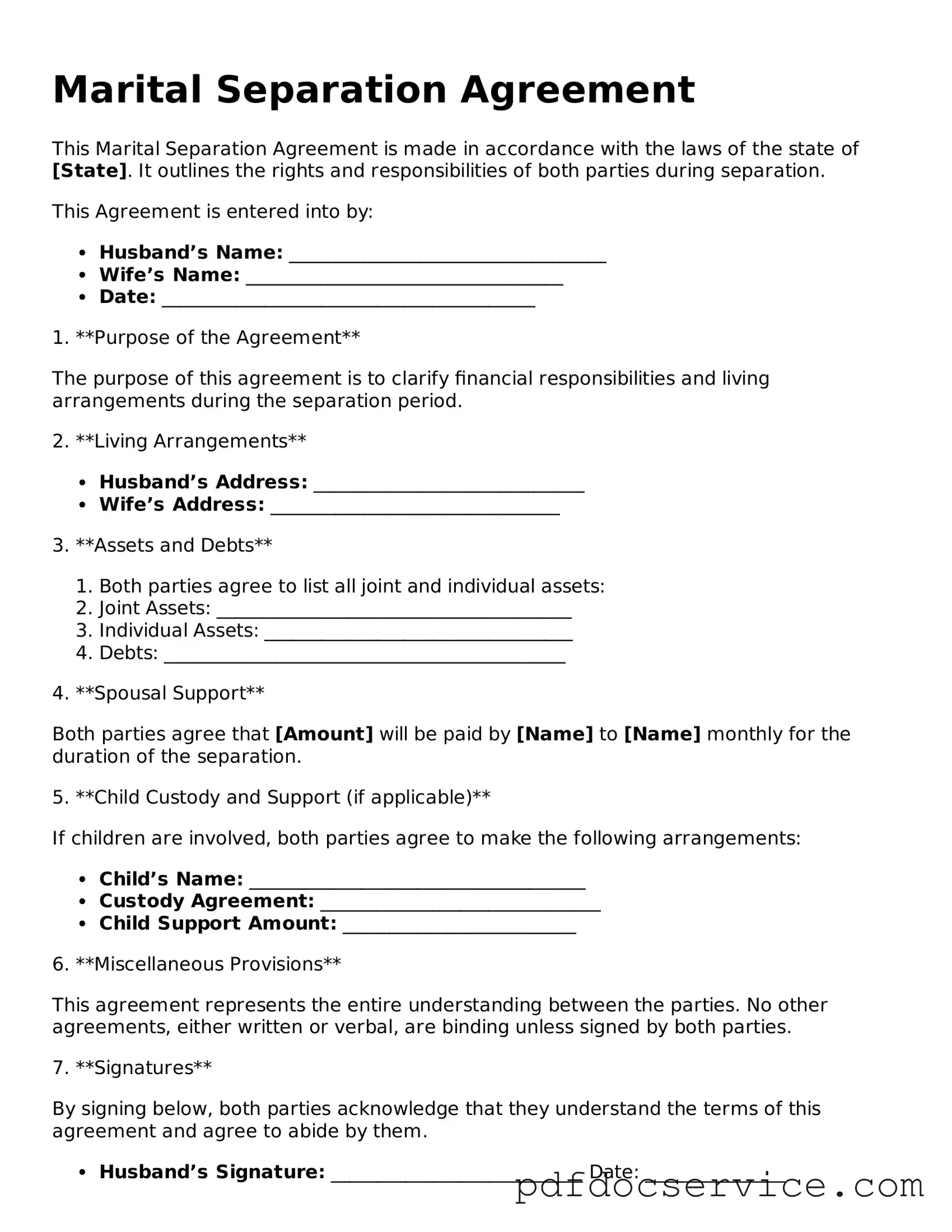What is a Marital Separation Agreement?
A Marital Separation Agreement is a legal document that outlines the terms and conditions under which a couple separates while remaining legally married. This agreement typically addresses issues such as division of property, child custody, visitation rights, and financial support. It serves as a framework to help both parties navigate their separation amicably and can be useful if they decide to divorce later on.
Why should a couple consider a Marital Separation Agreement?
Couples may choose to enter into a Marital Separation Agreement for several reasons:
-
To clarify responsibilities and rights during the separation period.
-
To minimize conflict and misunderstandings between the parties.
-
To provide a structured plan for financial support and child care.
-
To protect individual interests and assets.
What key elements are typically included in a Marital Separation Agreement?
A well-drafted Marital Separation Agreement usually covers the following key elements:
-
Division of Property:
How assets and debts will be divided.
-
Child Custody and Support:
Arrangements for children, including custody, visitation, and financial support.
-
Spousal Support:
Any financial support one spouse may provide to the other.
-
Living Arrangements:
Where each spouse will live during the separation.
Is a Marital Separation Agreement legally binding?
Yes, a Marital Separation Agreement can be legally binding if both parties voluntarily agree to its terms and sign it. However, for it to be enforceable, it is advisable to have the agreement reviewed by a legal professional. This ensures that the terms are fair and comply with state laws. In some cases, a court may need to approve the agreement, especially if it involves child custody arrangements.
How can a couple create a Marital Separation Agreement?
Creating a Marital Separation Agreement typically involves the following steps:
-
Open Communication:
Both parties should discuss their needs and expectations openly.
-
Drafting the Agreement:
One or both parties can draft the agreement, or they may choose to hire a legal professional to assist.
-
Review and Revise:
Each party should review the draft and suggest any necessary changes.
-
Sign the Agreement:
Once both parties agree on the terms, they should sign the document, ideally in the presence of a witness or notary.
Can a Marital Separation Agreement be modified?
Yes, a Marital Separation Agreement can be modified if both parties agree to the changes. It is important to document any modifications in writing and have both parties sign the updated agreement. This helps avoid potential disputes in the future. In some cases, a court may need to approve significant changes, especially if they pertain to child custody or support.
What happens if one party does not follow the terms of the Marital Separation Agreement?
If one party fails to comply with the terms outlined in the Marital Separation Agreement, the other party may seek legal recourse. This can include filing a motion in court to enforce the agreement. Courts generally take such agreements seriously, especially when they involve child custody or financial obligations. It is advisable to consult with a legal professional to understand the options available in such situations.
